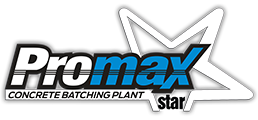The aggregate(sand, gravel, crushed stones etc.), which has the highest percentage(around 75%) among the ingredients of which concrete is composed, is increasing its strategic importance in ready mixed concrete industry each passing day as an ingredient of which natural sources are gradually decreasing and clean, quality samples conforming with stadards are getting harder to find.
Today, many concrete producers try to produce aggregate directly by founding subsidiaries or branch companies and running quarries because they can’t provide the quality aggregate that conforms with standards in convenient terms in the market.
The objective requires the monitoring and certification of quality process of not only concrete itself, but also the other ingredients that enter the concrete mixture apart from cement(aggregate, admixture etc.) and Turkey Ready Mixed Concrete Association members to look for certificate of conformity with standards for all ingredients that they procure and enter the concrete mixture and to not prefer concrete mixture ingredients of which conformity with standards is not certificated.
In terms of providing standardization in aggregate production and use and solving the problems in the industry, existence of Aggregate Producers Union(AGÜB) and gathering of conscious consumers that aim for the compliance with standards and quality in aggregate production as in ready mixed concrete are certainly important steps for the future of the industry.
Cement is an ingredient of which raw materials are limestone and clay and which is used in sticking mineral particles(sand, gravel, brick, briquette etc.).
Cement definitely needs water for fulling this sticking task. Cement is a binder that hardens by reacting with water. Crushed limestone is ground and powdered with the addition of clay and if necessary, iron ore and/or sand. This ingredient kilned in rotary furnaces at 1400-1500°C. The arising product is called “clinker”.
Then, an amount of gypsum(around 4-5%) is added to clinker and Portland Cement is obtained by powderizing it. In admixture cement production, apart from clinker and gypsum; one or more of trass, blast furnace slag, fly ash, silica fume etc. are added according to the cement type. Cement is the component that has the lowest volume in many concrete mixtures, however, it is the most important one among concrete ingredients.
The most commonly used cement types are Portland Composite Cement, Admixture Cement, Slag Cement, and Sulphate-Resistant Cement. Apart from these, White Portland Cement and some other cement types are also used with specific purposes. Because aggregate particles are the strongest agents in normal concrete, other two agents(cement paste and adherence) determines the strength. Strength of the cement paste is determined by water/cement ratio to a large extent.
Cement types used in concrete and their conformity evaluation have been standardized in TS EN 197 series.













